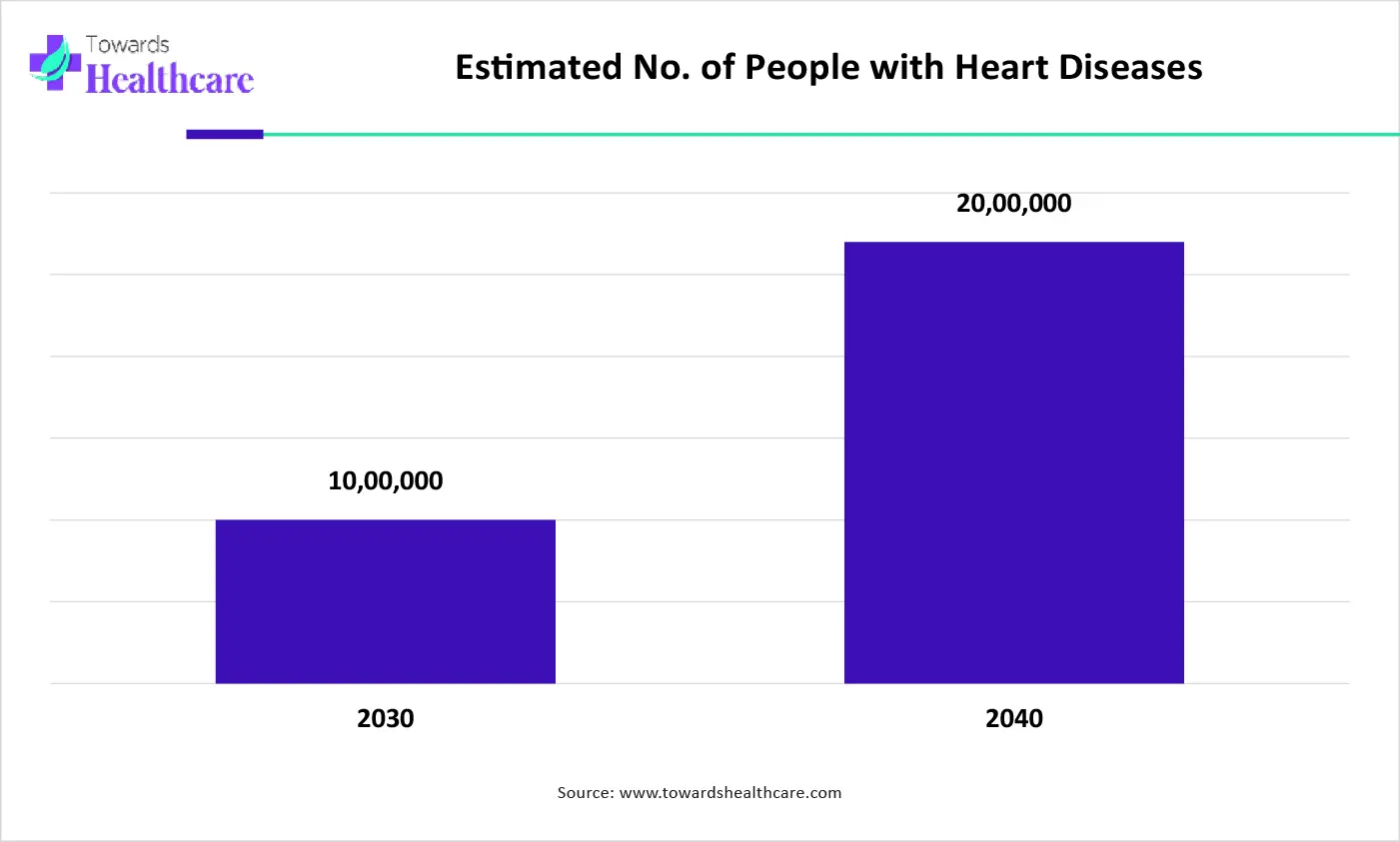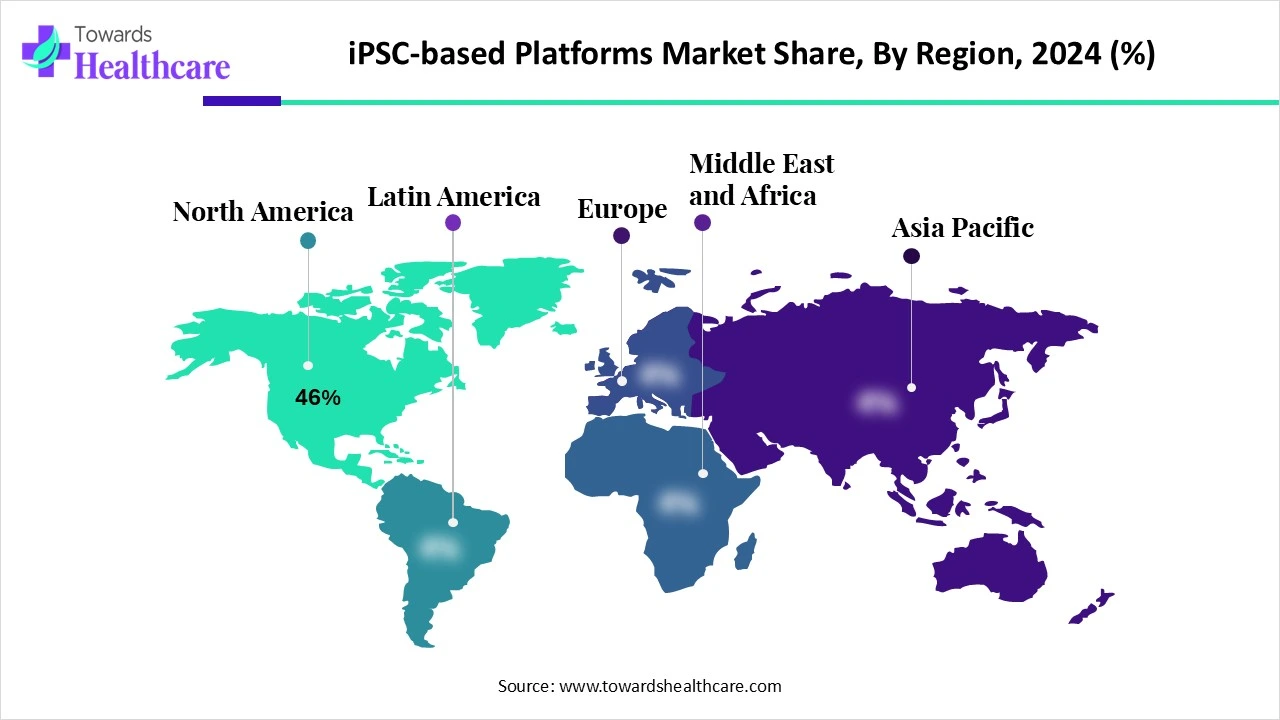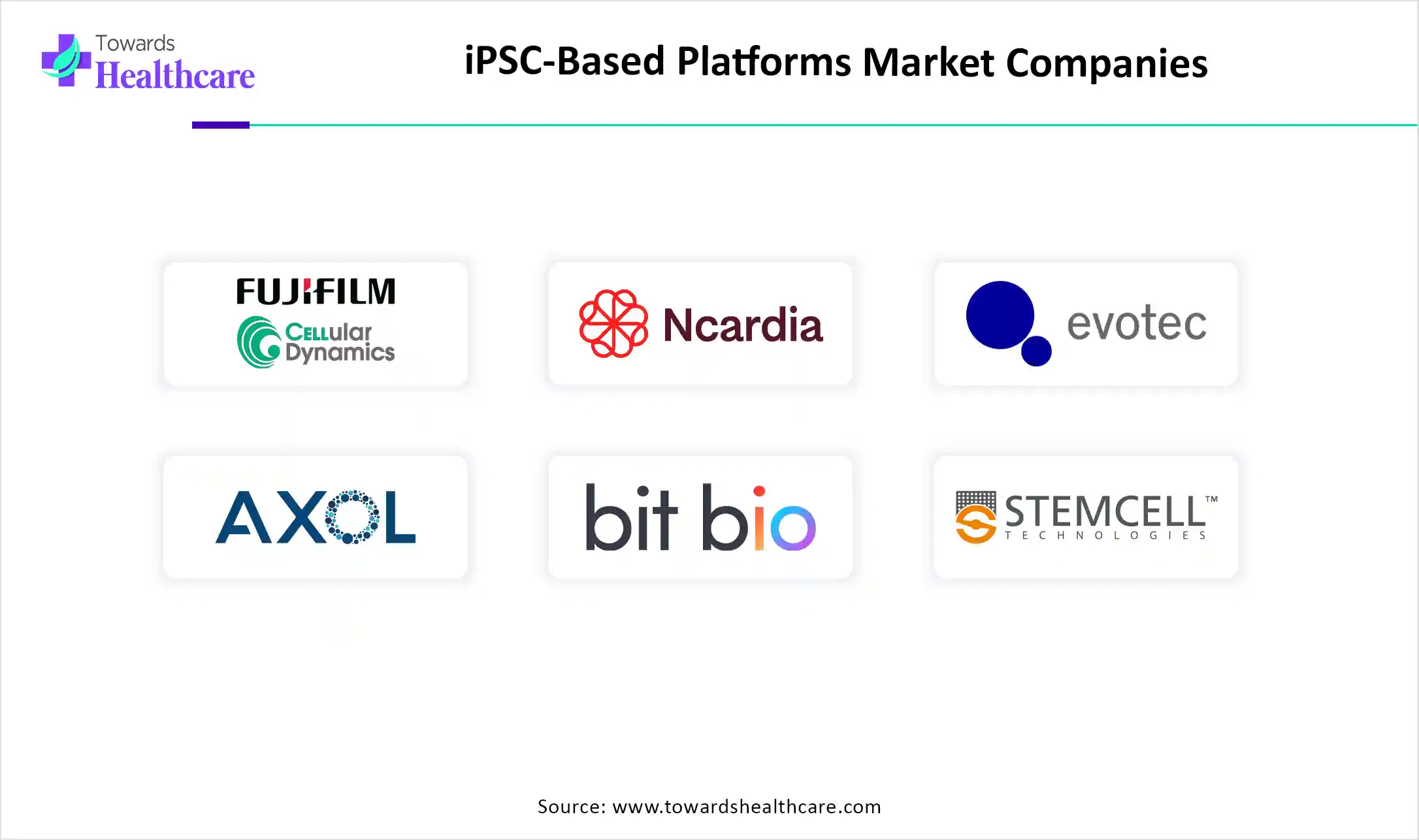December 2025

The global iPSC-based platforms market is on an upward trajectory, poised to generate substantial revenue growth, potentially climbing into the hundreds of millions over the forecast years from 2025 to 2034. This surge is attributed to evolving consumer preferences and technological advancements reshaping the industry.
The use of iPSC-based platforms for various applications is increasing. The growing diseases are also increasing their demand. At the same time, its workflow and application are being improved by the integration of AI. The companies are also collaborating to use this platform for the development and launch of advanced therapies. Similarly, such new platforms are also being developed. Therefore, their demand in different regions is rising, which is supported by the government funding. Thus, this in turn promotes the market growth.
The iPSC-based Platforms Market refers to the ecosystem of technologies, tools, services, and reagents centered around induced pluripotent stem cells (iPSCs) adult cells reprogrammed to a pluripotent state. These platforms enable applications in disease modeling, regenerative medicine, drug discovery, toxicology screening, and personalized cell therapy.
iPSC platforms offer the advantage of being patient-specific, ethically non-controversial (non-embryonic), and versatile for generating various human cell types (neuronal, cardiac, hepatic, etc.). Growth is fueled by advances in reprogramming, gene editing (e.g., CRISPR), 3D organoids, and rising interest in cell-based therapies.
With the use of AI in an iPSC-based platform, the large dataset can be rapidly analyzed, along with the detection of the outcomes. This helps in reducing the time and errors of the process. It also identifies the cell morphology and the abnormalities in it. Moreover, in drug development, it helps in predicting drug efficacy and toxicity. It helps in providing the best treatment approaches by analyzing the data of the iPSC cells and the patient's genetic profile. While in disease modeling, the data obtained can be easily interpreted.
Increasing Disease Modeling
The use of iPSC-based platforms in disease modeling is increasing. The iPSC cells are developed with the help of patient biospecimens for a specific disease, which in turn, helps in uncovering the disease mechanism more accurately. The disease modeling can also help in the development of innovative treatment approaches and can help discover the targets for the drugs. Moreover, with the use of these platforms and the approach, personalized medications are also being developed. Thus, this drives the iPSC-based platforms market growth.
Complex Procedure
While conducting the process a precise control over the reagents used and culturing conditions is crucial. This is increasing the demand for skilled personnel. Inconsistency is also observed in the quality and efficiency of the cells developed, which vary depending on the cell type, method used, and the donor. This makes the procedure time-consuming. Moreover, the regulatory barriers also increase the complexity of the procedure.
Growing Applications in Regenerative Medicine
For the development of regenerative medicine, the use of iPSC-based platforms is increasing. These platforms help in providing cells that are derived from a specific patient, promoting the development of regenerative medicines. Moreover, the regenerative medicine developed by this approach can help in developing new treatment options for neurodegenerative diseases or rare diseases. At the same time, the risk of immune rejection of the tissues developed can also be minimized. Thus, the development of next-generation regenerative medications is promoting the iPSC-based platforms market growth.
For instance,
By application type, the drug discovery & toxicology screening segment held the dominating share of 42% in the market in 2024. The human cell provided by the iPSC-based platforms helped in the drug discovery & toxicology screening. This supported the drug testing and enhanced its efficacy, and reduced the time required for the same. Thus, this contributed to the market growth.
By application type, the personalized medicine segment is expected to show the highest growth at a notable CAGR during the predicted time. With the help of iPSC-based platforms, personalized medications are being developed. Thus, the patient-specific disease modeling is also increasing. Moreover, personalized cell therapies are also being developed.
By cell type, the cardiomyocytes segment led the market with a 31% share in 2024. The growth in cardiovascular diseases increased the use of cardiomyocytes. Thus, for disease modeling, drug testing, and the development of new therapies, it was used. This enhanced the market growth.

The graph represents a comparison between the estimated number of people living with heart diseases in the year of 2030 and 2040. It indicates that there will be a rise in heart diseases. Hence, it increases the demand for iPSC-based platforms for the development of new treatment options for its effective management. Thus, this, in turn, will ultimately promote the market growth.
By cell type, the neural progenitors & neurons segment is expected to show the fastest growth rate during the predicted time. Due to the growing CNS focus for dealing with neurological diseases, the platform is being used. It provides human neural cells, avoiding the need for invasive techniques. Thus, it supports the CNS drug development.
By technology platform type, the reprogramming & differentiation platforms segment held the largest share of 38% in the market in 2024. These platforms were crucial for disease modeling, drug discovery, and toxicology screening. They helped in the large-scale development of different cell types. Moreover, their quality and consistency are also improved.
By technology platform type, the organoid & 3D culture platforms segment is expected to show the highest growth during the upcoming years. These platforms are promoting the modeling of various complex diseases. They are also being used in drug discovery and testing. Moreover, personalized therapies are also being effectively developed with the help of these platforms.
By end user, the pharmaceutical & biotechnology companies segment dominated the global market with a 48% share in 2024. These companies were constantly involved in drug testing and development, which increased the use of iPSC-based platforms. The growth in research and development supported by the funding also contributed to the same, promoting the market growth.
By end user, the cell therapy developers segment is expected to show the fastest growth rate during the upcoming years. To deal with the growing diseases, the cell therapy developers are adopting iPSC-based platforms. The growing demand for regenerative medicine is also driving its use. Similarly, the growing clinical trials are also contributing to the same.

North America dominated the iPSC-based platforms market share by 46% in 2024. The industries as well as institutions in North America are well-developed with the presence of advanced technologies. They focused on stem cell research, leveraging the iPSC platforms. This contributed to the market growth.
The biotech and pharmaceutical industries, as well as the academic institutions in the U.S., are increasingly contributing to the development of new treatment approaches for various diseases with the use of iPSC-based platforms. This, in turn, is increasing the collaboration among them. Moreover, these developments are also supported by the NIH funding.
The research and development conducted in the industries of Canada on stem cells is increasing. This, in turn, is increasing the use of iPSC platforms. At the same time, they are used for the development of novel therapies. Moreover, the presence of advanced clinical trial infrastructure is promoting its use.
Asia Pacific is expected to host the fastest-growing iPSC-based platforms market during the forecast period. The demand as well as the development of regenerative medicines is increasing in the Asia Pacific. This is increasing the utilization of iPSC-based platforms. Thus, this enhances the market growth.
The growing incidence of diseases in China is increasing the adoption of iPSC-based platforms to develop new treatment options and to uncover their mechanisms. Moreover, this is driving the development of therapies for heart diseases and neurodegenerative diseases. Additionally, their use in clinical trials for the same is also increasing.
The advancing healthcare sector in India is increasing the utilization of iPSC-based platforms. This, in turn, is increasing their use of drug discovery and disease modeling. Furthermore, the growing development of regenerative medicines and cell therapies is also enhancing their use. Thus, to support this development, funding from the government is also provided.
Europe is expected to grow significantly in the iPSC-based platforms market during the forecast period. Europe consists of well-developed industries, which in turn, are developing new clinical pipelines, driving the use of iPSC-based platforms. The investments are also supporting these developments. Thus, this promotes the market growth.
To treat rising cardiovascular disease and rare diseases, the industries in Germany are using iPSC-based platforms to research and develop drugs. At the same time, the growing demand for the use of personalized medications is also enhancing their use. Moreover, new IPSC biobanks are also being established, promoting the research and the use of these platforms.
The academic and research institutes present in the UK constitute a well-developed research infrastructure that enhances the use of iPSC-based platforms. Thus, the disease modeling, drug development, and toxicological screening are efficiently carried out. Furthermore, funding provided by the government is supporting these developments.

By Application
By Cell Type
By Technology Platform
By End User
By Region
December 2025
October 2025
October 2025
October 2025